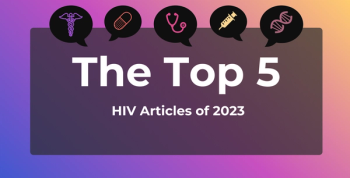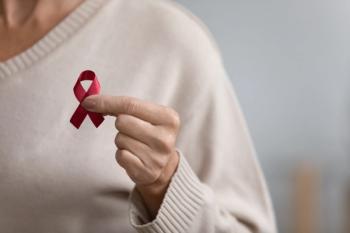
HIV
Latest News
Latest Videos
CME Content
More News

Strategies used during the COVID-19 pandemic to ensure continuity of care in people living with HIV can be used as a paradigm of adaptability during unexpected crises.

Although rates of opioid use disorder (OUD) are higher than previous estimates, OUD was relatively stable or decreasing over time in patients with HIV.

People living with HIV reported feeling inferiority due to HIV and gloomy feelings during the COVID-19 pandemic, as researchers linked internalized HIV stigma to depressive symptoms.

Separate machine learning models were able to effectively predict both the length of hospital stay and the risk of prolonged hospitalization in people living with HIV.

Patients living with HIV had a lower uptake of hepatitis A virus vaccination despite it being recommended for this population.

The deterioration of bones could contribute to the loss of teeth in women who are postmenopausal and living with HIV.

Patients With Breast Cancer, HIV More Likely to Experience Suboptimal Adjuvant Chemotherapy Delivery
The researchers noted the need for strategies to better support women living with HIV with breast cancer during toxic therapies to improve outcomes among this growing population.

The top-read topics in HIV for 2023 included dried blood tests for HIV, people with HIV facing stigmas, and vitamin D supplementation in women with HIV.

The top 5 most-read news content for 2023 featured COVID-19 vaccination uptake and its relation to HIV viral suppression, those more likely to get vitamin D supplements, and recurrence of Clostridioides difficile infection.

From 2013 to 2022, the all-cause mortality rate among patients with HIV in China declined from 5.4% to 2.7%.

Infants with HIV could be spared from requiring lifetime antiretroviral (ART) if treated within hours of birth to disrupt formation of HIV viral reservoirs.

Negotiations to extend US global HIV/AIDS relief work are deadlocked; the Biden administration delayed its rule on the proposed menthol cigarette ban until March 2024 after lobbying by civil rights groups; federal agencies have partnered with a digital health company to create an at-home test-to-treat program for flu and COVID-19.

The researchers suggested prioritizing and optimizing HIV and general health services for children younger than age 5 living with HIV and receiving ART to help address their disproportionately poorer outcomes.

Contributor: Reflections on World AIDS Day 2023—A Call to Increase Research Funding on HIV and Aging
Research on HIV and aging should be the focus of future research as World AIDS Day brings the chronic illness to the forefront.

The Targeted Minimum Loss-based Estimation proved the most accurate capture-recapture model in estimating hidden populations of patients with HIV.

Patients who have HIV and are using antiretroviral therapy (ART) did not have adverse outcomes when using nivolumab for cancer treatment.

IQ score could be detrimentally influenced by an individual’s HIV infection, both through neurons and the gut.

Compared with infants born at term, infants born preterm following exposure to HIV had no observed increase in acquisition of HIV.

Residents grew more knowledgeable and more comfortable with using pre-exposure prophylaxis (PrEP) drugs for prevention against HIV after training was included in their residency program.

Medicare may cover full cost of preexposure prophylaxis drugs; rules aim to prevent excessive compensation in Medicare Advantage (MA) market; health officials advocate for widespread syphilis testing and intervention.

Mothers in the United States were surveyed about the time of disclosure of their HIV status to their children, with internalized stigma of HIV a significantly associated factor.

Men who had sex with men had increased HIV testing after participating in an intervention.

Patients with HIV who started highly active antiretroviral therapy (ART) for 6 months had an improved immunohematological profile by the end of the study.

Patients living with HIV had an interest in future use of telehealth due to high satisfaction in the care provided.

Individuals aged up to 24 years living with HIV were likely to be satisfied with and would recommend telehealth services to their friends, a recent study found.
























































